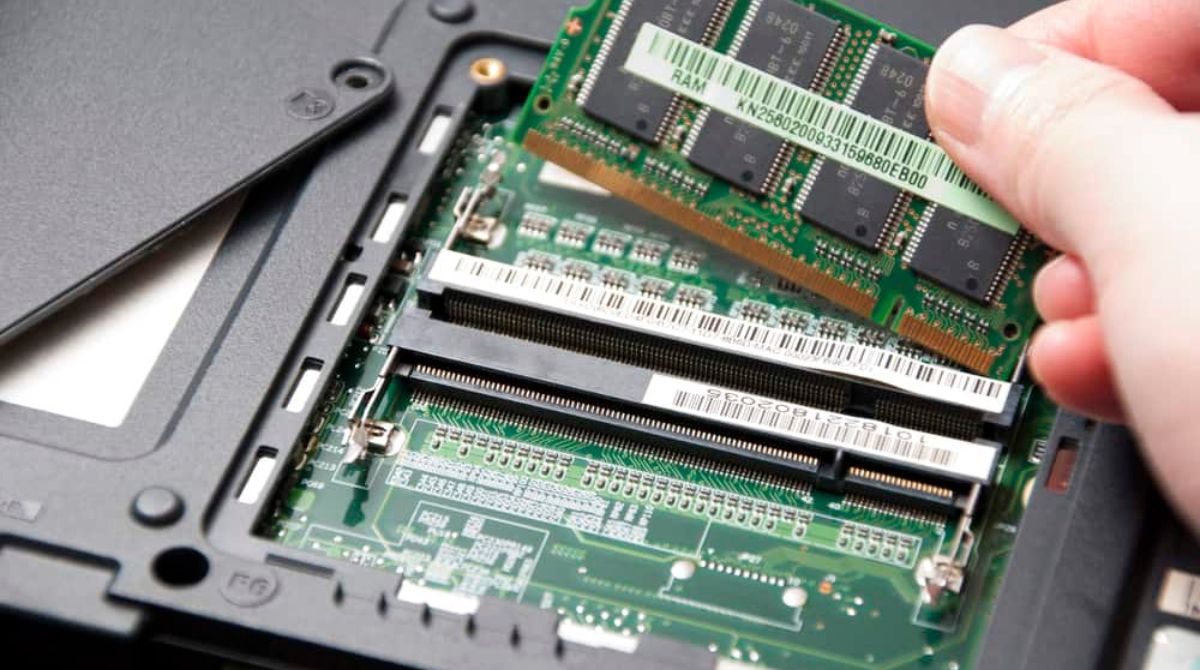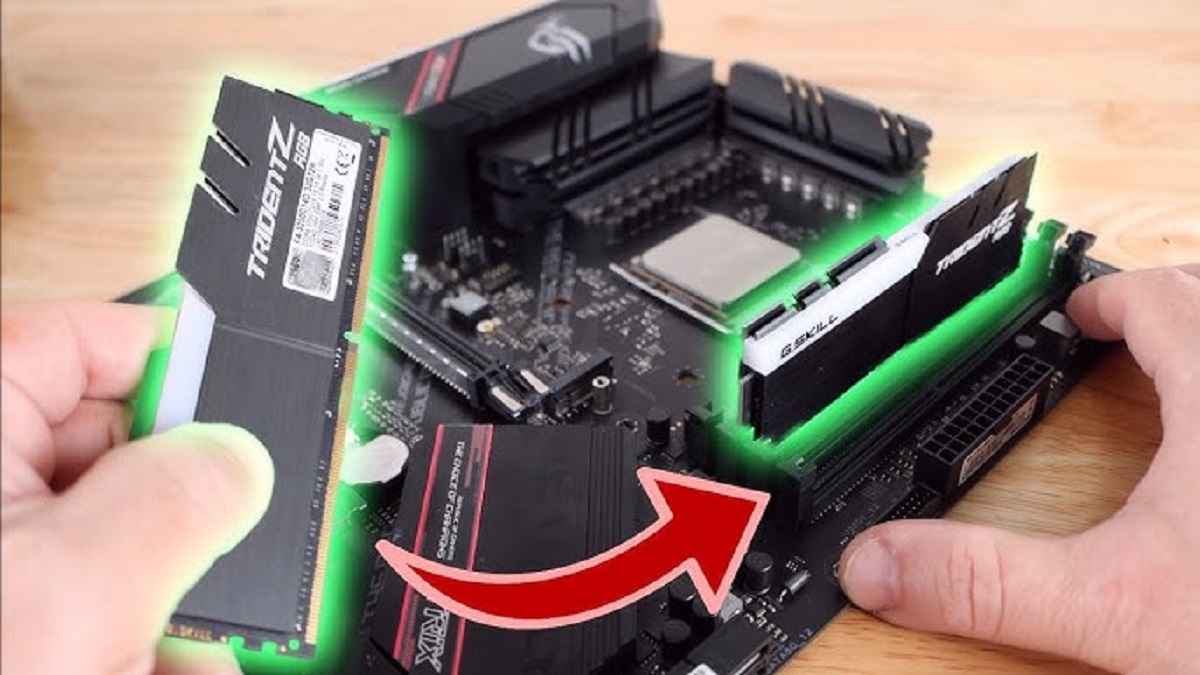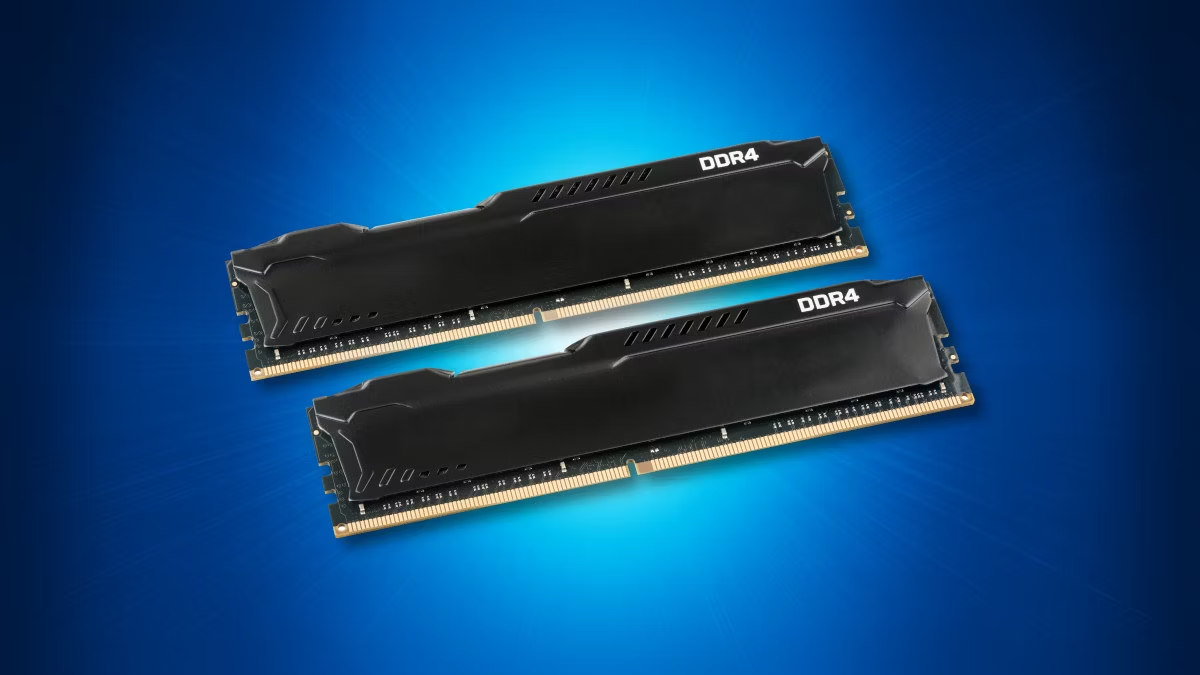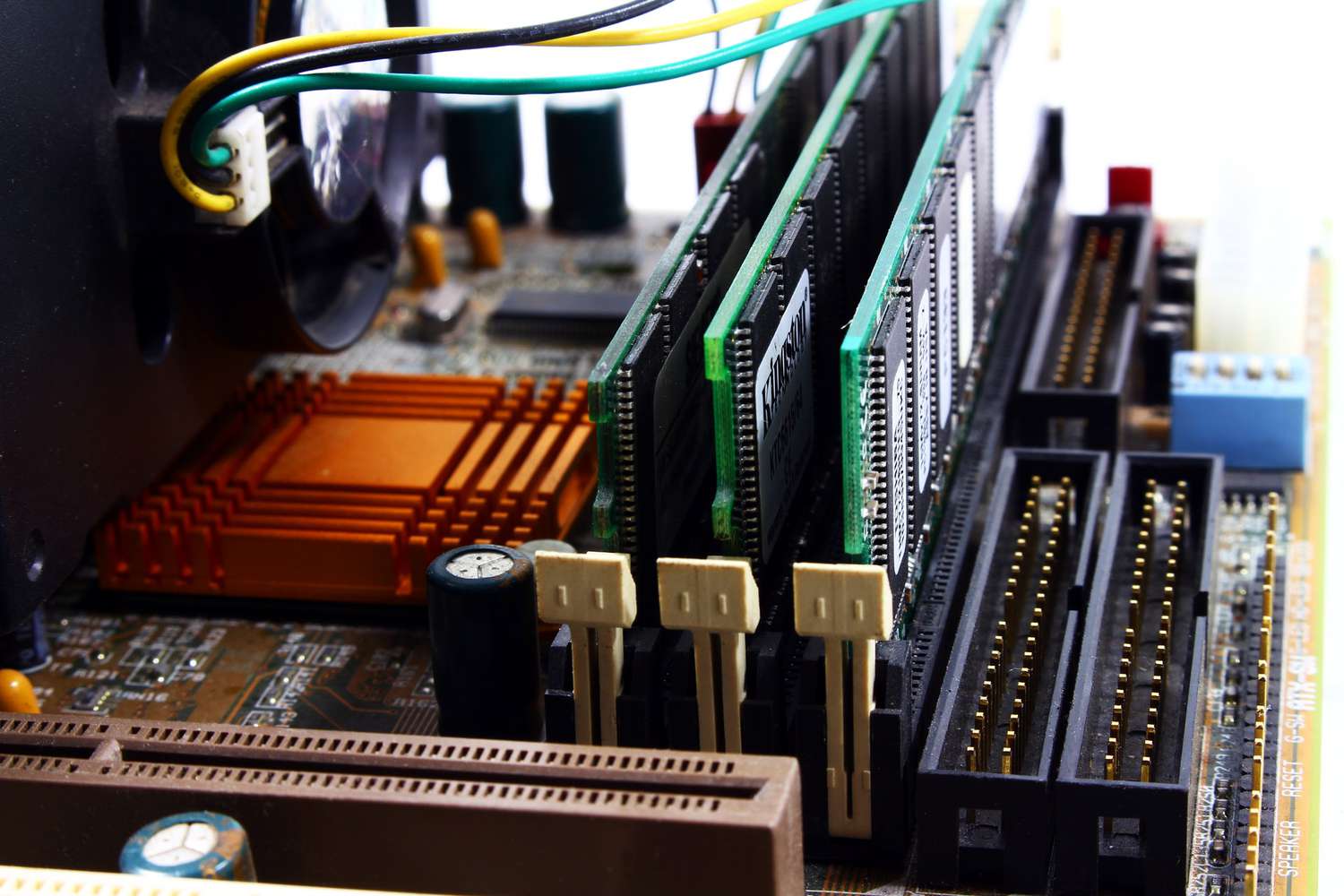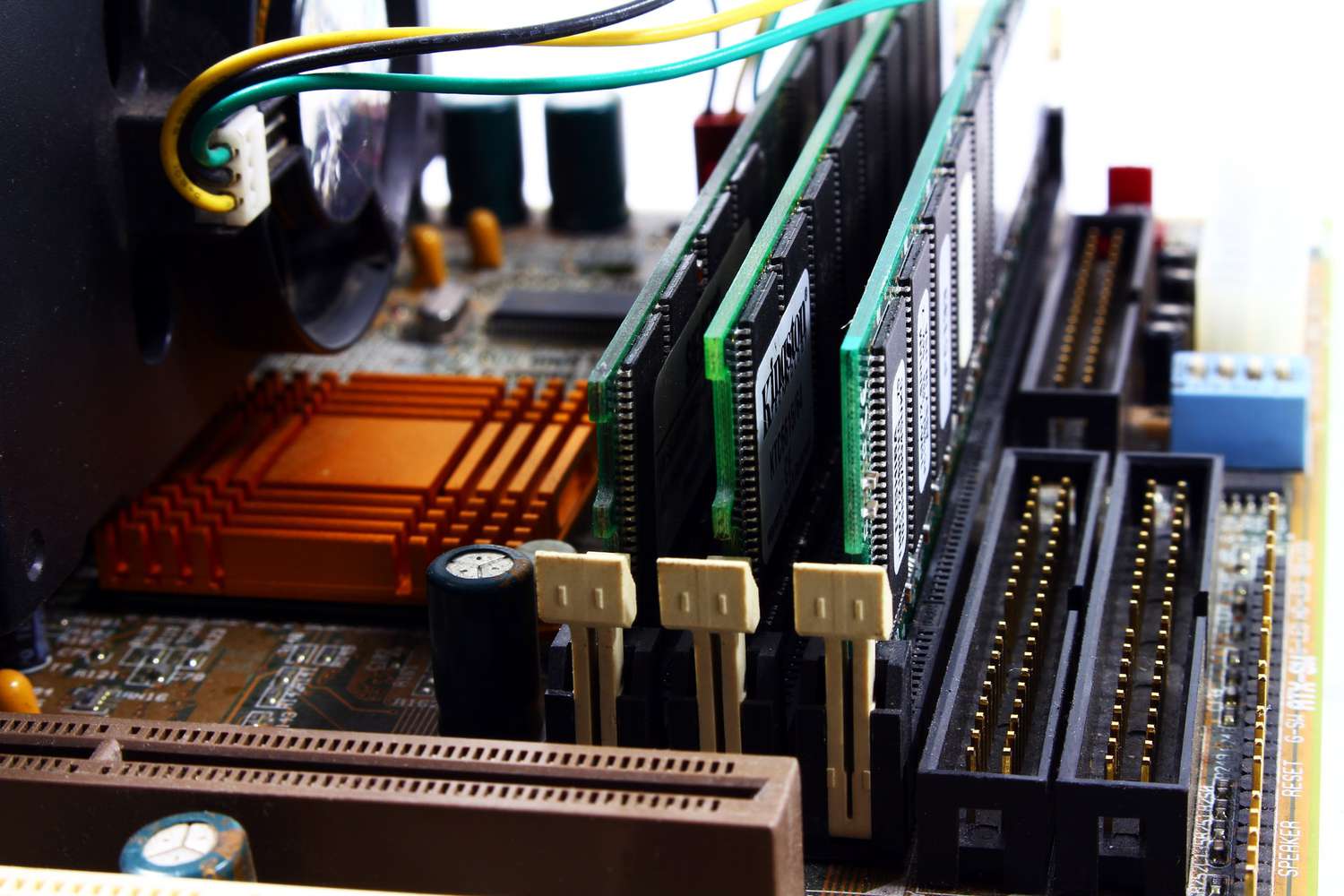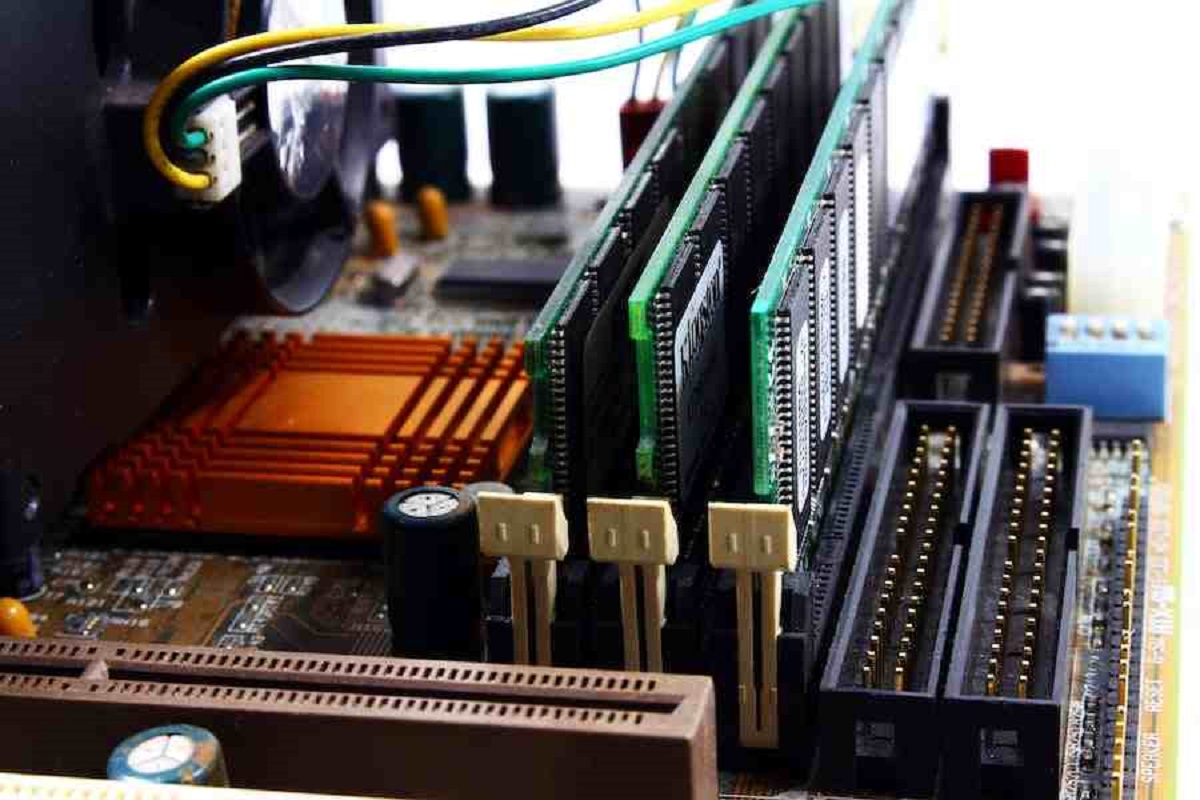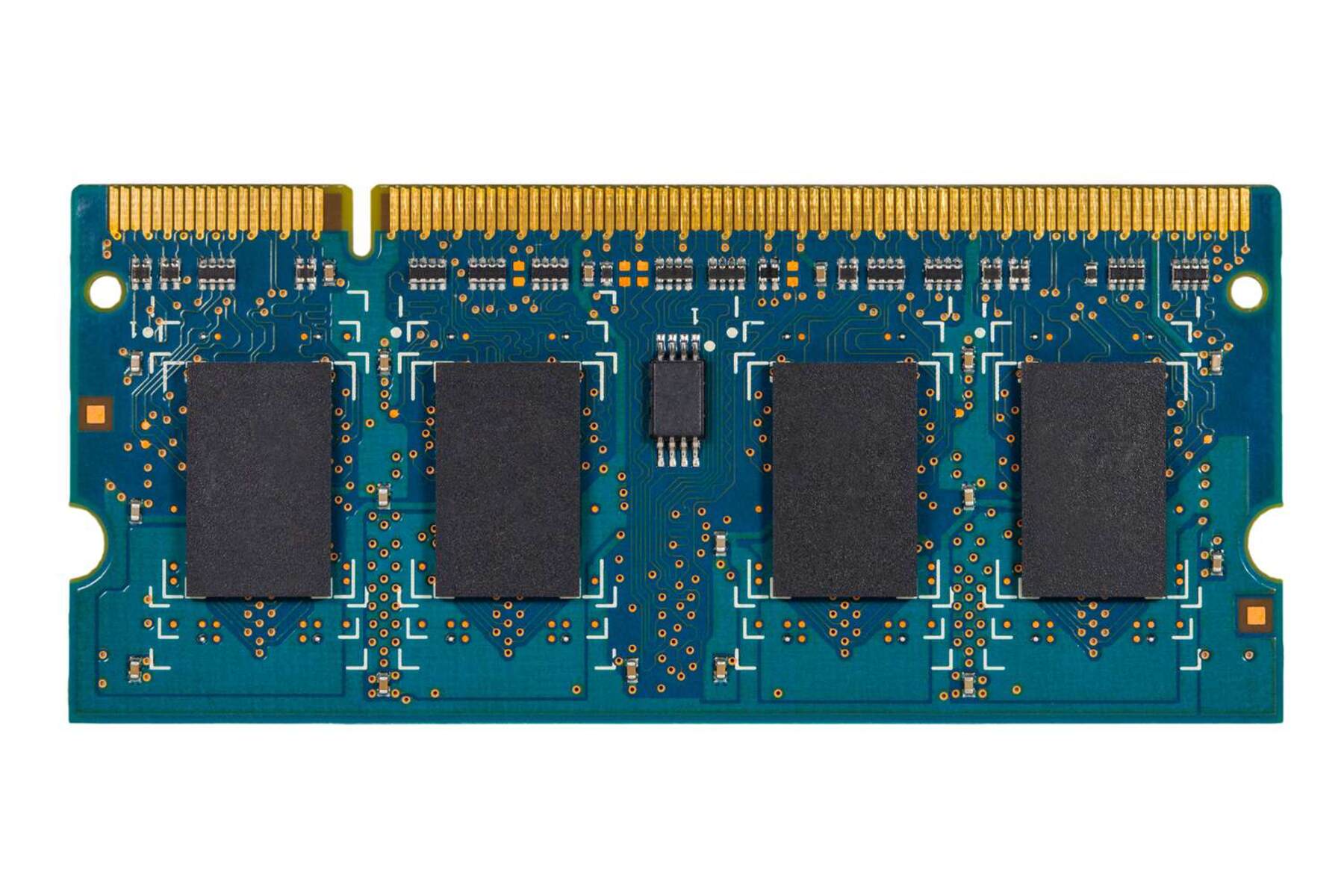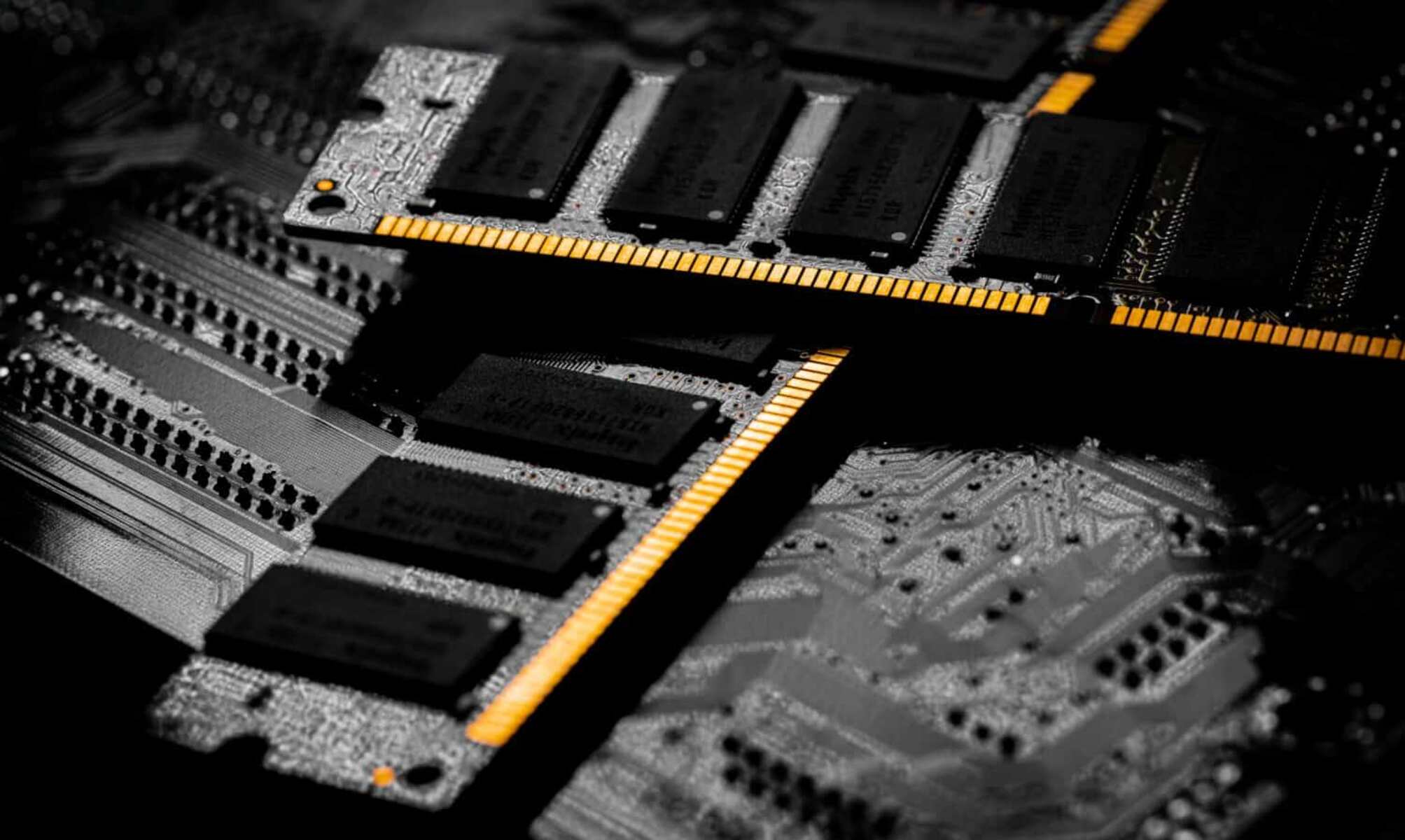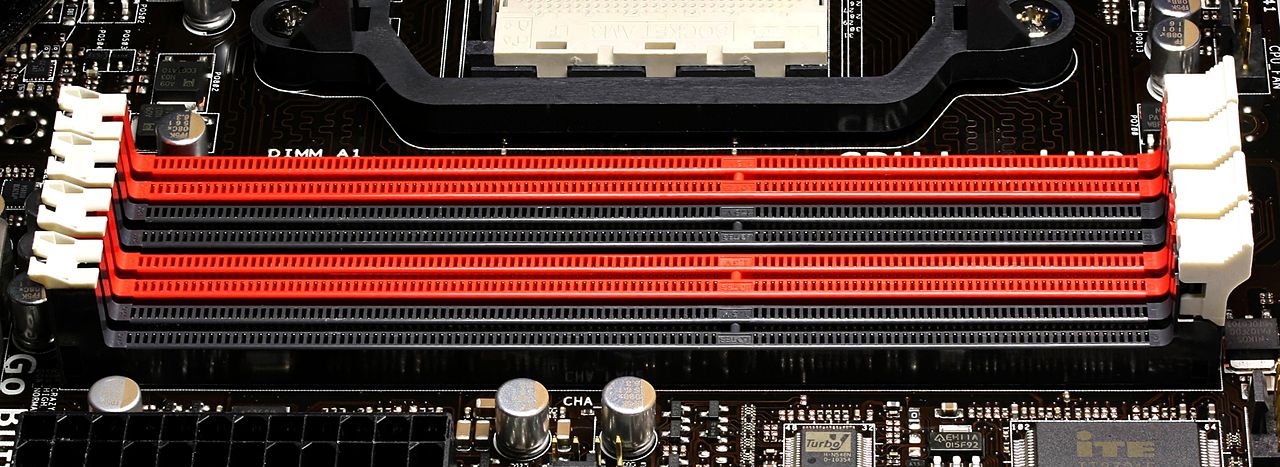Introduction
When it comes to computer performance, one of the key components that play a crucial role is RAM, which stands for Random Access Memory. RAM acts as a temporary storage unit for data that is being actively used by your computer’s processor. The more RAM you have, the smoother and faster your system will run, especially when multitasking or running resource-intensive applications.
While the amount of RAM is important, the way it is configured can also have a significant impact on overall performance. One configuration that can enhance the performance of your RAM is using Dual Channel Mode.
Dual Channel Mode RAM, as the name suggests, involves utilizing two memory channels simultaneously to double the data transfer speed between the RAM and the processor. By enabling Dual Channel Mode, you can optimize memory bandwidth, which can lead to improved system responsiveness and faster data processing.
In this article, we will explore what Dual Channel Mode RAM is, how it works, and the benefits it provides. We will also discuss how to enable Dual Channel Mode on your computer, compatible motherboards and CPUs, as well as tips for optimizing its performance. So, if you’re ready to supercharge your RAM, let’s dive deeper into the world of Dual Channel Mode.
What is RAM?
RAM, which stands for Random Access Memory, is a crucial component of a computer’s hardware architecture. It serves as a temporary storage unit for data that is actively being used by the computer’s processor. Think of RAM as a workbench where the processor can quickly access and manipulate data to perform tasks efficiently.
Unlike the long-term storage provided by hard drives or solid-state drives, RAM provides fast and temporary storage that allows the processor to quickly access frequently used data. This enables your computer to run applications smoothly and respond to your commands without delays. RAM acts as a bridge between the long-term storage devices and the processor, allowing for swift data retrieval and execution.
When you open an application or a file on your computer, the necessary data is loaded from the hard drive into RAM, which allows the computer’s processor to access and process it more quickly. The more RAM your computer has, the more data it can hold in this temporary storage, resulting in better performance.
RAM is considered volatile memory, meaning that its contents are lost when the computer is powered off. This is different from non-volatile memory like hard drives or solid-state drives, which retain data even when the power is turned off. Because of this volatility, it’s important to save your work frequently to the non-volatile storage to avoid losing any unsaved data.
The amount of RAM you have determines how much data your computer can hold and access at any given time. More RAM allows for smoother multitasking, as your computer can handle multiple applications and processes simultaneously without slowdowns or performance issues. It also aids in the smooth execution of resource-intensive tasks such as editing videos, running virtual machines, or playing modern video games.
In summary, RAM is a critical component that plays a vital role in ensuring the smooth and efficient operation of your computer. Its ability to quickly store and retrieve data allows the processor to perform tasks swiftly, resulting in a more responsive and enjoyable computing experience.
What is Dual Channel Mode RAM?
Dual Channel Mode RAM is a technology designed to enhance the performance and efficiency of your computer’s memory system. Traditionally, RAM operates on a single channel, meaning it transfers data between the processor and memory modules using a single data path. Dual Channel Mode RAM, on the other hand, utilizes two memory channels simultaneously, doubling the data transfer speed.
By enabling Dual Channel Mode, the memory bandwidth between the RAM modules and the processor is effectively increased. This allows for faster and more efficient transfer and retrieval of data, resulting in improved system responsiveness and overall performance. It effectively doubles the data transfer rate, providing a noticeable boost in multitasking capabilities and reducing latency.
To enable Dual Channel Mode, it is necessary to have two identical RAM modules installed in the correct slots on your motherboard. The modules need to match in terms of capacity, speed, and timing specifications to ensure compatible operation. The motherboard’s chipset must also support Dual Channel Mode for this technology to be activated.
It’s important to note that Dual Channel Mode RAM operates independently of the CPU’s architecture. It is a feature enabled through the motherboard and is compatible with various CPU types, such as Intel and AMD processors. Some motherboards may also support Tri-Channel or Quad-Channel configurations, depending on their compatibility and design.
Dual Channel Mode RAM offers a significant performance boost in scenarios where memory bandwidth plays a critical role, such as gaming, video editing, 3D rendering, and other resource-intensive tasks. It allows for smoother multitasking, as the increased bandwidth facilitates quicker data exchange between the RAM and the processor. This results in reduced bottlenecks and enhanced overall system performance.
In summary, Dual Channel Mode RAM is a technology that enhances memory performance by utilizing two memory channels simultaneously. By doubling the data transfer speed, it improves system responsiveness and multitasking capabilities. It is a valuable feature for users who rely on their computers for demanding tasks that require rapid data access and processing.
How does Dual Channel Mode RAM work?
To understand how Dual Channel Mode RAM works, we first need to delve into the concept of memory channels. A memory channel represents a dedicated pathway between the processor and RAM modules. In a traditional single-channel configuration, there is only one pathway, limiting the data transfer speed between the processor and RAM. However, Dual Channel Mode RAM utilizes two memory channels simultaneously, effectively doubling the available bandwidth.
When operating in Dual Channel Mode, the RAM modules must be installed in specific memory slots on the motherboard. These slots are usually color-coded or labeled to indicate the correct configuration for Dual Channel Mode. The motherboard’s chipset coordinates the communication between the processor and the RAM modules, allowing data to be simultaneously transferred through both memory channels.
When a task is executed that requires data from RAM, the processor sends a request for the data. The motherboard’s memory controller divides the request into two parts and distributes it evenly between the two memory modules in Dual Channel Mode. This allows for parallel data transfer, with each module handling its portion of the data.
As the data is transferred in parallel through the two memory channels, the effective bandwidth is doubled compared to a single-channel configuration. This leads to faster data exchange between the RAM and the processor, reducing latency and improving overall system performance. The increased bandwidth also benefits tasks that require large amounts of data to be quickly accessed and processed, such as gaming, image/video editing, and running virtual machines.
It’s important to note that to take full advantage of Dual Channel Mode, both RAM modules need to be identical in terms of capacity, speed, and timing specifications. Mismatched modules can result in instability or failure to enable Dual Channel Mode. Consult your motherboard’s manual or manufacturer’s website for specific instructions on installing RAM modules for Dual Channel Mode.
In summary, Dual Channel Mode RAM works by utilizing two memory channels simultaneously to double the data transfer speed between the processor and RAM modules. This parallel data transfer improves system responsiveness and performance, particularly in tasks that require rapid data access and processing. It is a beneficial technology for users seeking to optimize their memory performance and enhance the overall capabilities of their computer system.
Benefits of Dual Channel Mode RAM
Enabling Dual Channel Mode RAM on your computer can bring several benefits in terms of performance, responsiveness, and overall computing experience. Here are some key advantages of utilizing Dual Channel Mode RAM:
- Faster Data Transfer: One of the primary benefits of Dual Channel Mode RAM is the increased data transfer speed. By utilizing two memory channels simultaneously, the effective bandwidth is doubled compared to a single-channel configuration. This allows for quicker exchange of data between the RAM modules and the processor, resulting in improved system responsiveness.
- Improved Multitasking: Dual Channel Mode RAM enhances multitasking capabilities by allowing for smoother and more efficient data access. With the increased bandwidth, your computer can handle multiple applications and processes simultaneously without experiencing significant slowdowns or performance issues. This is particularly beneficial if you frequently work with resource-intensive applications or juggle numerous tasks at once.
- Reduced Latency: Dual Channel Mode RAM can help reduce memory latency, which refers to the time it takes for data to be accessed from the RAM. With the increased bandwidth and parallel data transfer, there is a decrease in the delay or lag when retrieving data from memory. This results in faster data processing, leading to a more responsive system.
- Enhanced Gaming Performance: Gamers often benefit significantly from Dual Channel Mode RAM. Many modern games require rapid access to large amounts of data, including textures, game assets, and AI calculations. By enabling Dual Channel Mode, you can optimize memory bandwidth, allowing for smoother gameplay, reduced loading times, and improved overall gaming performance.
- Optimized Resource-Intensive Tasks: Dual Channel Mode RAM is particularly advantageous when working with memory-intensive tasks like video editing, 3D rendering, scientific simulations, and virtual machines. These tasks often require large datasets to be quickly loaded and processed. The increased memory bandwidth provided by Dual Channel Mode can significantly speed up these tasks, reducing processing times and improving productivity.
It’s important to note that the benefits of Dual Channel Mode RAM can vary depending on the specific workload and the performance demands of your applications. While enabling Dual Channel Mode can provide performance improvements, it may not always result in noticeable gains in everyday computing tasks that are not memory-intensive.
In summary, the benefits of Dual Channel Mode RAM include faster data transfer, improved multitasking capabilities, reduced latency, enhanced gaming performance, and optimization of resource-intensive tasks. By taking advantage of Dual Channel Mode, you can unlock the full potential of your computer’s memory system and enjoy a more responsive and efficient computing experience.
How to Enable Dual Channel Mode RAM
Enabling Dual Channel Mode RAM involves proper installation of RAM modules and configuring your computer’s BIOS settings. Here are the steps to enable Dual Channel Mode on your computer:
- Check motherboard compatibility: Ensure that your motherboard supports Dual Channel Mode RAM. Consult the motherboard’s manual or the manufacturer’s website for information on supported memory configurations.
- Install identical RAM modules: Purchase two identical RAM modules that match in terms of capacity, speed, and timing specifications. It’s important to use the same brand and model to ensure optimal compatibility.
- Locate memory slots: Identify the correct memory slots on your motherboard to install the RAM modules for Dual Channel Mode. Typically, these slots are color-coded or labeled to indicate their pairing for Dual Channel Mode. Refer to the motherboard’s manual for specific instructions.
- Power off your computer: Shut down your computer and ensure that it is completely powered off before proceeding with the installation of RAM modules.
- Install RAM modules: Insert the RAM modules firmly into the designated memory slots. Apply equal pressure to both ends to ensure proper seating. Make sure that the locking mechanism on the slots clicks into place to secure the modules.
- Power on your computer: Once the RAM modules are properly installed, power on your computer and enter the BIOS setup by pressing the appropriate key during the boot process (typically shown on the screen).
- Access BIOS settings: Use the arrow keys on your keyboard to navigate through the BIOS menu. Look for the section related to memory or RAM settings.
- Enable Dual Channel Mode: Locate the setting to enable Dual Channel Mode or similar terminology. This setting may vary depending on your motherboard manufacturer and BIOS version.
- Save and exit: After enabling Dual Channel Mode, navigate to the exit menu in the BIOS and choose the option to save the changes and exit. Your computer will reboot, and Dual Channel Mode will be activated.
Once Dual Channel Mode is enabled, you can verify its activation by checking your system’s specifications in the operating system or using diagnostic software. You should see the memory modules running in Dual Channel configuration.
It’s important to note that improper installation or configuration of RAM modules can lead to system instability or failure to enable Dual Channel Mode. If you encounter any issues, refer to your motherboard’s manual or consult the manufacturer’s support resources for assistance.
In summary, enabling Dual Channel Mode RAM involves installing identical RAM modules into the correct memory slots on your motherboard and configuring the BIOS settings. By following these steps, you can take full advantage of Dual Channel Mode and optimize memory performance for improved system responsiveness and multitasking capabilities.
Compatible Motherboards and CPUs for Dual Channel Mode RAM
Dual Channel Mode RAM is a feature that is supported by a wide range of motherboards and CPUs. However, it is important to ensure compatibility between your motherboard and CPU before enabling Dual Channel Mode. Here are some considerations to keep in mind:
Motherboard Compatibility:
When selecting a motherboard, you need to ensure it supports Dual Channel Mode RAM. Most modern motherboards, especially those designed for gaming or high-performance PCs, have this capability. Consult the specifications or documentation of your motherboard to confirm its support for Dual Channel Mode.
Additionally, check the motherboard’s memory slot configuration. Dual Channel Mode typically requires the use of specific memory slots for proper operation. These slots are often color-coded or labeled to indicate their grouping for Dual Channel Mode. Ensure that you install your RAM modules in the correct slots as specified by the motherboard’s manual.
CPU Compatibility:
Dual Channel Mode RAM is enabled at the motherboard level and is not dependent on the specific CPU being used. As such, most modern CPUs from both Intel and AMD are compatible with Dual Channel Mode RAM. Dual Channel Mode is a feature that is supported by the motherboard’s chipset rather than the CPU itself.
To confirm CPU compatibility, refer to the specifications of your motherboard and cross-reference them with the supported CPUs listed by the motherboard manufacturer. The motherboard’s manual or the manufacturer’s website should provide a list of compatible CPUs.
It is worth noting that while Dual Channel Mode RAM is compatible with various CPUs, the overall performance and capabilities of the CPU can have an impact on system performance. It’s important to consider the CPU’s specifications, including clock speed, number of cores, and cache size, alongside Dual Channel Mode for optimal system performance.
Memory Module Considerations:
To effectively utilize Dual Channel Mode, it is crucial to install identical RAM modules. Both modules should match in terms of capacity, speed, and timing specifications. It is recommended to purchase a RAM kit that is specifically labeled as Dual Channel or compatible with Dual Channel Mode to ensure proper performance and compatibility.
In summary, Dual Channel Mode RAM is compatible with a wide range of motherboards and CPUs. Ensure that your motherboard supports Dual Channel Mode, install the RAM modules in the correct slots, and verify the compatibility of your CPU with the motherboard. By following these considerations, you can enable Dual Channel Mode and optimize memory performance for improved system responsiveness and multitasking capabilities.
Tips for Optimizing Dual Channel Mode RAM Performance
Once you have enabled Dual Channel Mode RAM on your computer, there are several tips and best practices you can follow to optimize its performance. These tips will help you make the most out of Dual Channel Mode and enhance your overall computing experience. Here are some recommendations to consider:
- Install sufficient RAM: While enabling Dual Channel Mode can improve memory performance, it’s important to ensure that you have an adequate amount of RAM in the first place. Having enough memory will prevent excessive swapping of data between RAM and storage devices, which can slow down your system.
- Use high-quality RAM modules: Invest in high-quality RAM modules from reputable manufacturers. Quality RAM modules are more likely to have better compatibility, reliability, and performance. Opt for modules with higher clock speeds and lower latency for improved data transfer and responsiveness.
- Keep your RAM cool: High temperatures can negatively affect the performance of your RAM. Ensure proper ventilation and airflow in your computer case to keep the RAM modules cool. Consider installing additional case fans or using liquid cooling solutions to maintain optimal operating temperatures.
- Update your motherboard’s BIOS: Manufacturers often release BIOS updates that can improve RAM compatibility and performance. Check the motherboard manufacturer’s website regularly for any available updates and install them accordingly. Updated BIOS may also provide additional features and bug fixes.
- Enable XMP/AMP profiles: Many modern motherboards offer XMP (Intel) or AMP (AMD) profiles that automatically configure RAM settings for optimal performance. These profiles adjust the RAM’s frequency, timings, and voltage to match the manufacturer’s specifications. Enabling XMP/AMP profiles can simplify the process of optimizing your RAM’s performance.
- Keep your operating system up to date: Ensure that your operating system and device drivers are up to date. The latest updates can include performance improvements and bug fixes that can benefit your RAM’s performance. Regularly check for updates and install them to maintain optimal system performance.
- Minimize background processes: Close unnecessary applications and background processes that may consume memory resources. This can free up more RAM for your active tasks, reducing the need for data swapping and improving overall system responsiveness.
- Regularly clean up your system: Perform regular system maintenance tasks, such as disk cleanup and removal of temporary files. This helps optimize storage space and allows your system to run more efficiently, reducing the strain on your RAM.
By following these tips, you can maximize the performance of your Dual Channel Mode RAM configuration. Remember to regularly monitor your system’s performance and adapt these recommendations to suit your specific needs and workloads. Enjoy the enhanced speed and responsiveness that Dual Channel Mode brings to your computer.
Conclusion
In conclusion, Dual Channel Mode RAM is a powerful technology that can significantly boost your computer’s memory performance and overall system responsiveness. By utilizing two memory channels simultaneously, Dual Channel Mode doubles the data transfer speed between the RAM and the processor, resulting in faster and more efficient data processing.
We explored the fundamentals of RAM and how Dual Channel Mode RAM works. We also discussed the benefits of enabling Dual Channel Mode, including faster data transfer, improved multitasking capabilities, reduced latency, enhanced gaming performance, and optimized resource-intensive tasks.
Enabling Dual Channel Mode is relatively straightforward and involves installing identical RAM modules in the designated memory slots on your motherboard, as well as configuring the BIOS settings. It is essential to ensure compatibility between your motherboard, CPU, and RAM modules to achieve optimal performance.
To maximize the benefits of Dual Channel Mode RAM, it is recommended to install sufficient RAM, use high-quality modules, keep your RAM cool, regularly update your motherboard’s BIOS, enable XMP/AMP profiles, keep your operating system up to date, minimize background processes, and perform routine system maintenance.
With Dual Channel Mode RAM, you can unlock the full potential of your computer’s memory system and enjoy improved performance in various tasks, from gaming and multimedia editing to multitasking and resource-intensive computing.
So, take advantage of Dual Channel Mode RAM and experience the benefits of faster data transfer, improved multitasking, reduced latency, and enhanced overall system performance. Upgrade your computer’s memory configuration and elevate your computing experience to new heights.







